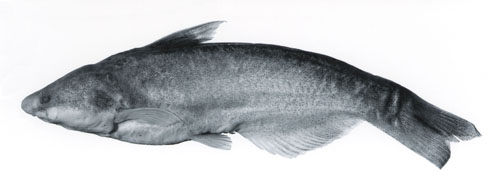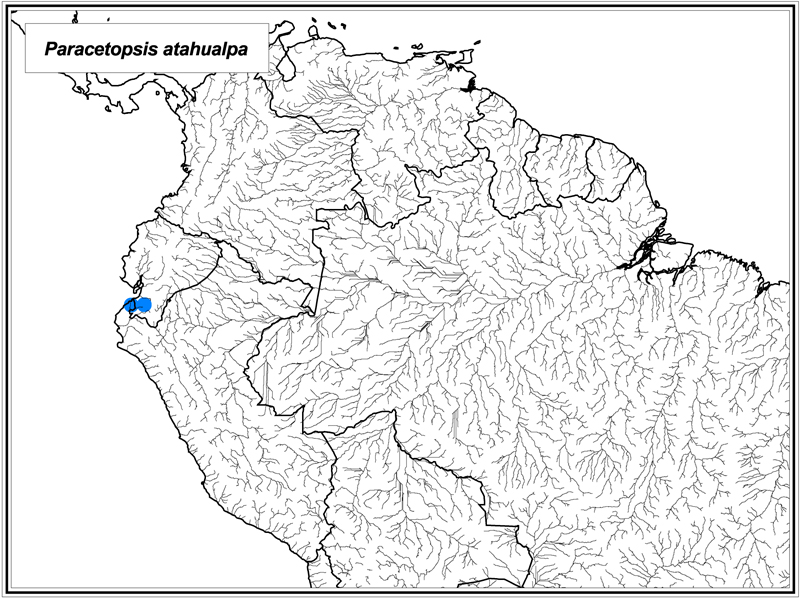
Reproduced from Vari, Ferraris and de Pinna (2005).
Paracetopsis atahualpa Vari, Ferraris & de Pinna, 2005
Identification: Paracetopsis atahualpa is distinguished from all other species in the Cetopsinae with the exception of P. bleekeri and P. esmeraldas by the combination of the possession of a vomerine tooth patch with more than one row of teeth and a medial separation of the contralateral components of the patch. Paracetopsis atahualpa differs from P. bleekeri in the relative length of the pelvic fin (completely overlapping the vent versus falling short of the vent, respectively), the pigmentation pattern on the operculum (the possession of a distinct patch of dark pigmentation versus the lack of such pigmentation, respectively), in overall body pigmentation (dark versus light, respectively), in the extent of the medial gap in the vomerine tooth patch (with a limited medial gap between the contralateral components of the tooth patch equivalent to the width of one or two vomerine teeth versus with a distinct medial gap equivalent to the width of three of four vomerine teeth, respectively), and to a degree in the number of total vertebrae (50 versus 47 to 50 with 49 most common and 50 in only 1 of 21 radiographed specimens, respectively). Paracetopsis atahualpa differs from P. esmeraldas in the dorsal profile of the body at the area of contact of the posterodorsal portion of the externally apparent jaw musculature with the anterior portion of the epaxial musculature (with distinct notch versus smooth continuous profile, respectively), the degree of pigmentation of the basal portion of the maxillary barbel (distinctly dark versus pale or with few scattered, dark chromatophores, respectively), and to a degree in the number of caudal vertebrae (36 to 38 with 37 most common versus 37 to 40 with 38 most common, respectively) and number of total vertebrae (50 versus 50 to 53 with 51 most common, respectively). Maximum size: 242 mm SL.
Range: Paracetopsis atahualpa is only known from the Pacific Ocean versant R�o Tumbes basin in northwestern Peru and the adjoining upper reaches of the R�o Zarumilla basin in southwestern Ecuador.
Information from Vari, R. P., C. J. Ferraris Jr. & M. C. C. de Pinna. 2005. The Neotropical whale catfishes (Siluriformes: Cetopsidae: Cetopsinae), a revisionary study. Neotropical Ichthyology 3:127-238.
